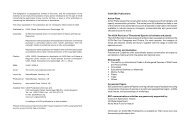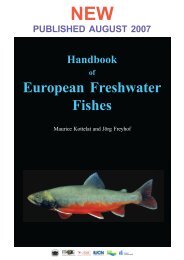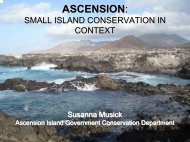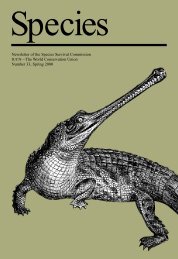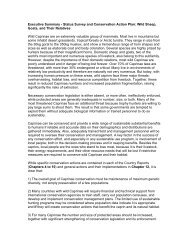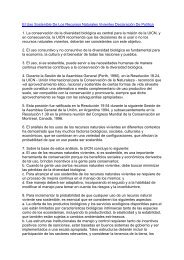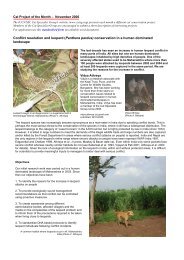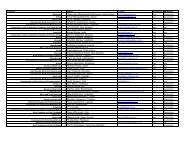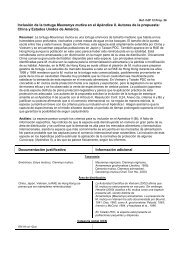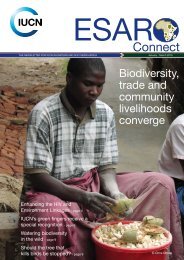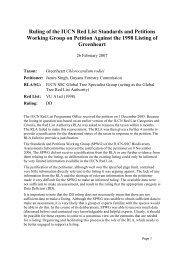Planning education to care for the earth - IUCN Knowledge Network
Planning education to care for the earth - IUCN Knowledge Network
Planning education to care for the earth - IUCN Knowledge Network
You also want an ePaper? Increase the reach of your titles
YUMPU automatically turns print PDFs into web optimized ePapers that Google loves.
Australia: Community involvement inconservation of biological diversityChris MobbsAbstractThe National Land<strong>care</strong> Programme in Australia is designed <strong>to</strong> raiselong term productivity and <strong>the</strong> ecological sustainability of <strong>the</strong>country’s land and water resources. To achieve this goal, <strong>the</strong>government, <strong>the</strong> community and individuals at all levels need <strong>to</strong>understand <strong>the</strong> nature and value of land resources and <strong>to</strong> work inpartnership. The Save <strong>the</strong> Bush and One Billion Trees Programmesare two elements of National Land<strong>care</strong>, focusing on maintenance ofbiological diversity. Community groups interested in protecting andres<strong>to</strong>ring native vegetation receive funds. Waterwatch, anenvironmental <strong>education</strong> and awareness programme, promotes waterquality moni<strong>to</strong>ring. People develop <strong>the</strong>ir skills and knowledge, changeattitudes <strong>to</strong> land and water management through involvement inpractical conservation.IntroductionThe arrival of Europeans in Australia in 1770 brought about changes thatpermanently altered <strong>the</strong> Australian landscape and wildlife at a rate far greaterthan in <strong>the</strong> previous 50,000 years. About 100 species of plants and at least27species of birds and mammals have disappeared in less than 200 years ofEuropean settlement; a fur<strong>the</strong>r 209 plant species and 59 vertebrates areendangered. Destruction of habitats through extensive clearing of vegetation<strong>for</strong> agriculture until very recent times is <strong>the</strong> most significant fac<strong>to</strong>r, whilechanges in fire regimes and overgrazing by exotic animals such as rabbitsand sheep and cattle have fur<strong>the</strong>r degraded <strong>the</strong> land.The coastal plain along <strong>the</strong> eastern and south-western coasts is under greatpressure from urban expansion and <strong>to</strong>urism; by <strong>the</strong> year 2000, almost 85 percent of <strong>the</strong> population will live in urban areas within 30 km. of <strong>the</strong> ocean.Urban development and vast areas of farmland are now interspersed withremnants of <strong>for</strong>est and woodlands in thin corridors, in small patches onhill<strong>to</strong>ps or in <strong>the</strong> corners of fields.There are habitats that are not adequately protected even in natureconservation reserves which protect many of <strong>the</strong> most important biologicalresources and <strong>the</strong> move <strong>to</strong>wards <strong>the</strong> development of more ecologicallysustainable land use has focused attention on remnant vegetation as <strong>the</strong> laststronghold <strong>for</strong> some species. The importance of remnant vegetation lies in125



